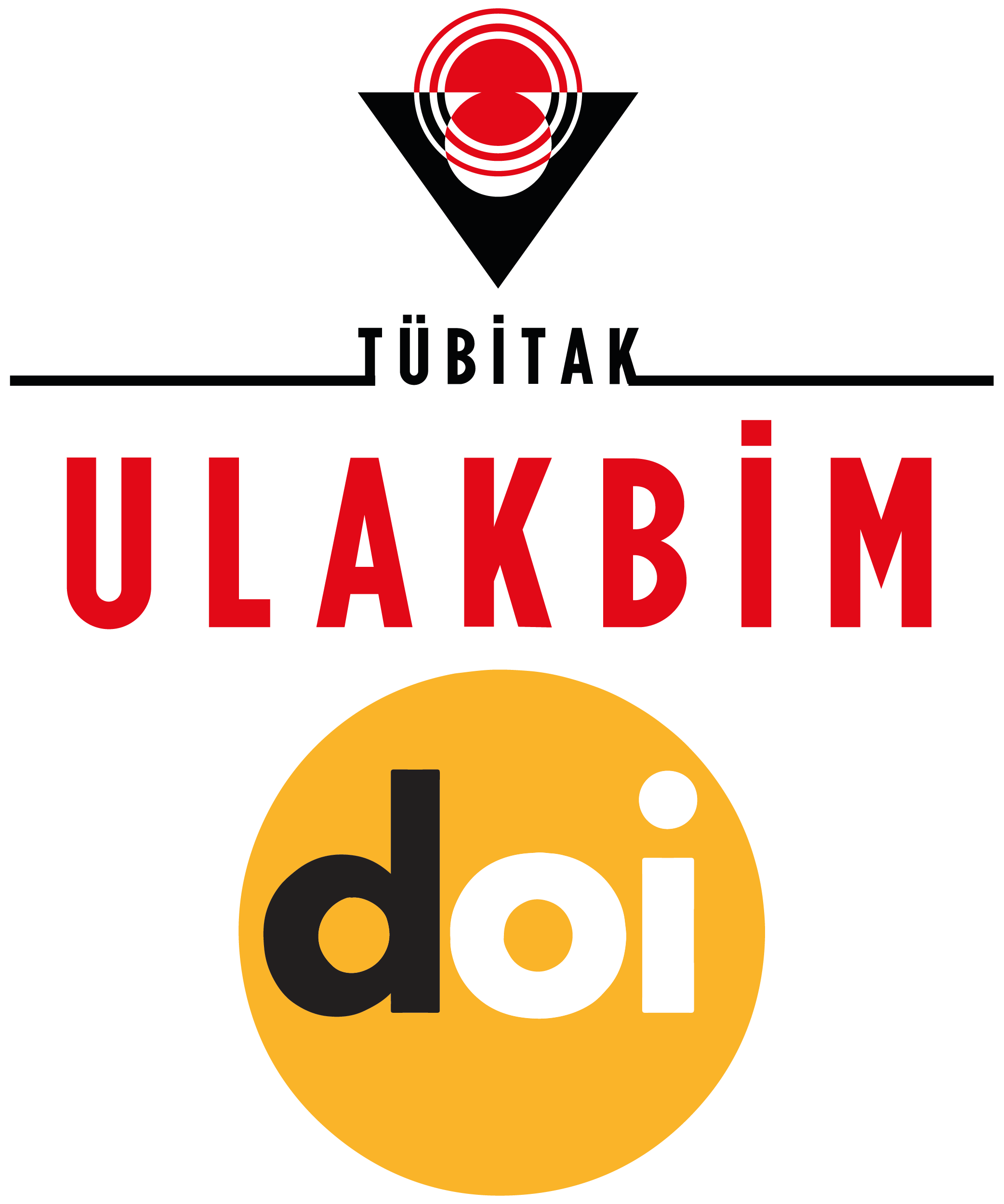Antik Kaynaklar Işığında Roma Balık Sosu: Garum/Liquamen (Roman Fish Sauce in the Light of Ancient Sources: Garum/Liquamen)
DOI:
https://doi.org/10.21325/jotags.2022.1054Keywords:
Garum, Liquamen, Rome, Hellen, SauceAbstract
Throughout history, aquaculture has been one of the most important nutrients used by human beings. Ancient Anatolian, Hellenic and Roman peoples, who are the most important civilizations of the Mediterranean, also tried to make the most of aquaculture, and in this context, they produced a fish sauce called garum by using the internal organs of the fish that are not suitable for consumption. When the archaeological data is analyzed in addition to the ancient sources, it is possible to reach very important information about garum. It has been claimed that the Hellenes first produced garum using a fish called garos. In the following process, garum was also adopted by the Romans, and its name was changed to liquamen, which means to liquefy in Latin. Garum, which was consumed fondly for many yeras by the ancient Anatolian, Hellenic and Roman peoples, was often criticized by some ancient writers. Garum, which was generally produced by non-Roman entrepreneurs, was transported to the fartest corners of the empire using the trade routes of the period. Although the production and the consumption of garum ended in Europe after the collapse of the Western Roman Empire, it remained popular for a while in the lands dominated by the Eastern Roman Empire.
References
Aelianus, C. (2010). De Natura Animalium Libri Septemdecim (Fridericus Jacobs, trans.). Whitefish: Kessinger Publishing.
Amidenus, A. (1935). Libri medicinales I-IV (Alexander Olivieri, ed.). Berlin and Leipzig: Teubner.
Anthimus. (1996). De observatione ciborum: On the Observance of Foods (Mark Grant, trans.). London: Prospect Books.
Apicius. (1969). De re Coquinaria (Mary Ella Milham, trans.). Leipzig: Teubner.
Artemidorus. (2012). Oneirocritica (Daniel E. Harris-McCoy, trans.). Oxford: OUP Oxford.
Athenaeus. (1957-63) Deipnosophisticarum Epitome: Athenaeus (C. B. Gulick, trans.). London and New York: Loeb Classical Library.
Aurelianus, C. (1950). On Acute Diseases: And On Chronic Diseases (I. E. Drabkin, trans.). Chicago: University of Chicago Press.
Cato. (1934). De Agricultura: On Agriculture (W. D. Hooper & Harrison Boyd Ash, trans.). London: Loeb Classical Library.
Celsus, A. C. De Medicina (W. G. Spencer, trans.). London: Loeb Classical Library.
Columella, L. J. M. (1968). De Re Rustica (H. B. Ash, E. S. Forster & Edward H. Heffner, trans.). Cambridge: Cambridge University Press.
Corpus Inscriptionum Latinarum I-XVI, Leipzig-Berlin 1862-1943.
Galenus, A. (2005). De placitis Hippocratis et Platoni, libri I-V (Phillip De Lacy, ed.). Berlin: Akademie-Verlag.
Grenfell, B. P., & Hunt, A. S. (1898-). The Oxyrhynchus Papyri. London.
Herodotos. (1991). Historiae (Herodot Tarihi) (A. Erhat ve M. Ökmen, çev.). İstanbul: Remzi Kitapevi.
Homeros. (2008). Odysseia (A. Erhat, A. Kadir, çev.). İstanbul: Can Yayınları.
Horace. (2021). Satires II (K. Freudenburg, ed.). Cambridge: Cambridge University Press.
Isidorus. (2006). Origines: The Etymologies of Isidore of Seville (S. A. Barney, trans.). Cambridge: Cambridge University Press.
Manilius, M. (2012). Astronomica (Theodor Breiter, trans.). London: Wentworh Press.
Martialis. (1920). Epigrammata: Epigrams (C. A. Walter & M. A. Kerr, trans.). London: Loeb Classical Library.
Palladius. (2013). Opus Agriculturae (John G. Fitch, trans). London: Prospect Books.
Plato. (1977). Laches, Protagoras, Meno, Euthydemus (W. R. M. Lamb, trans.). London: Loeb Classical Library.
Plinius. (1958). Naturalis Historia (H. R. Rackham, trans.). London: Loeb Classical Library.
Pollux, I. (2015). Onomasticon. Andesite Press.
Quintilianus, M. F. (1922). Institutio Oratoria (E. Butler, trans.). London: Loeb Classical Library.
Seneca. (2017). Ad Lucilium Epistulae Morales, Vols. I-III (R. M. Gummere, trans.). London: Forgotten Books.
Strabon. (1949). Geographika: The Geography of Strabon (H.L. Jones, trans.). London and New York: Loeb Classical Library.
Tacitus, C. (1900). De Vita Iulii Agricolae (Henry Furneaux, ed.). Oxford: Clarendon Press.
Modern Kaynaklar
Alcock, J. P. (1990). Pisces in Britannia. The Eating and Portrayal of Fish in Roman Britain. Harlan Walker (Ed.), Fish: Food from the Waters. London: Prospect Books.
Alcock, J. P. (2006). Food in the Ancient World. London: Greenwood Press.
Aslan, E. (2015). Kekova Bölgesinde Bulunan Balık Sosu İşlikleri. CEDRUS, 3, 141-161.
Campbell, D. B. (2006). Roman Legionary Fortresses 27 BC-AD 378. Oxford: Osprey Publishing.
Carannante, A. (2019). The Last Garum of Pompeii: archaeozoological analyses on fish remain from the “Garum Shop” and related ecological inferences. International Journal of Osteoarchaeology, 29(3), 377-386.
Corcoran, T. (1963). Roman Fish Sauces. The Classical Journal, 58(5), 204-210.
Curtis, R. I. (1983). In Defense of Garum. The Classical Journal, 78(3), 232-240.
Curtis, R. I. (1984-86). Product Identification and Advertising on Roman Commercial Amphorae. Ancient Society, 15(17), 209-228.
Curtis, R. I. (1991). Garum and Salsamenta: Production and Commerce in Materia Medica. Leiden: Brill.
Curtis, R. I. (2009). Umamni and the Food of Classical Antiquity. The American Journal of Clinical Nutrition, 90(3), 712-718.
Dalby, A. (1997). Siren Feasts. A History of Food and Gastronomy in Greece. London and New York: Routledge.
Dalby, A. (2011). Geoponika: Farm Work- A Modern Translation of the Roman and Byzantine Farming Handbook. London: Prospect Books.
Dalby, A. (2013). Food in the Ancient World from A to Z. London and New York: Routledge.
Davies, R. W. (1971). The Roman Military Diet. Britannia, 2, 122-142.
Dean, L. M. (1990). Nutrition and preparation. R. E. Martin & G. J. Flick (Ed.), The Sea Food Indutry. New York: Van Nostrand Rainhold.
Downie, D. (2003). A Roman Anchovy’s Tale. Gastronomica, 3(2), 25-28.
Duff, A. M. (1928). Freedmen in the Early Roman Empire. Oxford: Clarendon Press.
Fournet, J. L. (2021). How late antique dipinti contribute to a better knowledge of amphora contents. Dario Bernal-Casasola, Michel Bonifay & Victoria Leitch (Ed.), Roman Amphora Contents Reflecting on the Maritime Trade of Foodstuffs in Antiquity. Oxford: Archaeopress Publishing.
Frank, T. (1936). On the Export Tax of Spanish Harbors. The American Journal of Philology, 57(1), 87-90.
Frank, T. (1940). Economic Survey of Ancient Rome. Baltimore: John Hopkins University Press.
Garnsey, P. (1999). Food and Society in Classical Antiquity. Cambridge: Cambridge University Press.
Grainger, S. (2021). The Story of Garum: Fermented Fish Sauce and Salted Fish in the Ancient World. London and New York: Routledge.
Grimal P., & Monod, T. (1952). Sur le veritable nature du 'garum'. Revue des Etudes Anciennes, 54, 27-38.
Haley, E. W. (1990). The Fish Sauce Trader L. Iunius Puteolanus. Zeitschrift für Papyrologie und Epigraphik, 80, 72-78.
Jardin, C. (1961). Garum et sauces de poisson de l'antiquite. Dans Rivista di Studi Liguri, 27, 70-96.
Kaufman, C. K. (2006). Cooking in Ancient Civilizations. London: Greenwood Press.
Klosee, P. (2014). The Essence of Gastronomy: Understanding the Flovor and Beverages. London and New York: Taylor and Francis Group.
Kurlansky, M. (2003). Salt: A World History. London: Penguin Books.
Lenger, D. S. (2008). Antikçağ’da Garum. Arkeoloji ve Sanat Dergisi, 129, 69-76.
Love, R.M. (1982). Basic facts about fish. A. Aitken, I.M. Mackie, J.H. Merritt & M.L. Windsor (Ed.), Fisheries & Food. Edinburgh: Ministry of Agriculture, Torry Research Station.
Michell, H. (1947). The Edict of Diocletian: A Study of Price Fixing in the Roman Empire. The Canadian Journal of Economics and Political Science/Revue Canadienne d’Economique et de Science Politique, 13(1), 1-12.
Nash, C. (2011). The History of Aquaculture. New Jersey: Wiley-Blackwell.
Nollé, J. (1993). Side Im Altertum: Geschichte undZeugnisse I: Inschriften Griechischer Städte aus Klaeinasien. Bonn: Habelt.
Paoli, U. (1975). Rome, Its People, Life and Customs. Harlow: Longman.
Pigott, G. M., & Tucker, B.W. (1990). Seafood effects of technology on nutrition. New York: Marcel Dekker Inc.
Powell, J. (2006). Ancient Fishing and Fish Processing in the Black Sea Region. American Journal of Archaeology, 110(3), 526-527.
Rostovtzeff, M. (1926). Social and Economic History of the Roman Empire. New York: Biblo and Tannen Publishers.
Rostovtzeff, M. (1957). The Social and Economic History of the Roman Empire. Oxford: Clarendon Press.
Senn, C. (1915). The Book of Sauces. Chicago: Applewood Books.
Sutherland, C. H. V. (1939). The Romans in Spain. Cambridge: Cambridge University Press.
Thompson, D. W. (1947). A Glossary of Greek Fishes. London: Oxford University Press.
Thompson, D. W. (1947). A Glossary of Greek Fishes. London: Oxford University Press.
Van Neer, W., & Uerpmann, M. (1998). Fish remains from the new excavations at Troy. H. Buitenhuis, L. Bartosiewicz & A.M. Choyke (Ed.), Archaeozoology of the Near East III. Proceedings of the third international symposium on the archaeozoology of the Southwestern Asia and adjacent areas. Groningen: ARC-Publication.
Von den Driesch, A. (1999). Archäozoologische Untersuchungen an Tierknochen aus dem dritten und ersten vorchristlichen Jahrtausend vom Besik-Yassıtepe, Westtürkei. Studia Troica, 9, 439-474.
Wilkins, J. (2000). The Boastful Chef: The Discourse of Food in Ancient Greek Comedy. Oxford and New York: Oxford University Press.
Downloads
Published
How to Cite
Issue
Section
License
Copyright (c) 2023 Journal of Tourism & Gastronomy Studies

This work is licensed under a Creative Commons Attribution-NonCommercial 4.0 International License.








